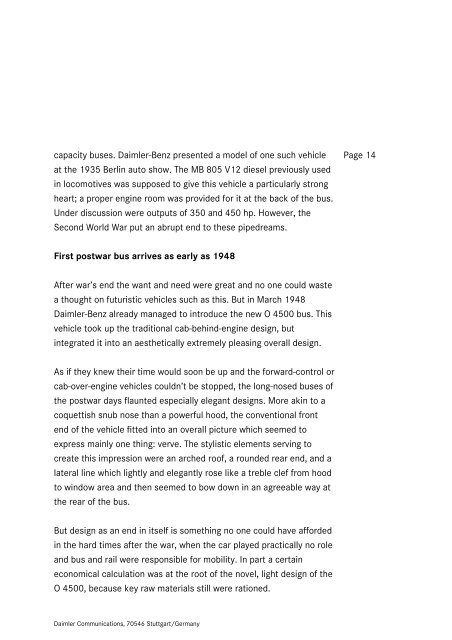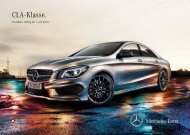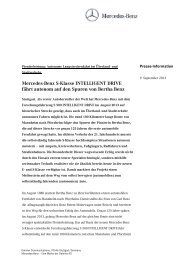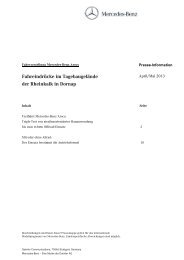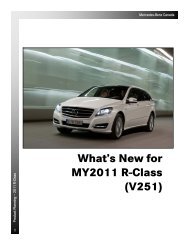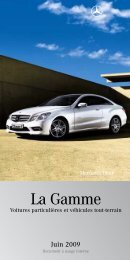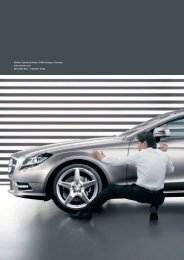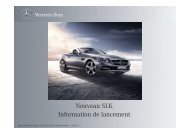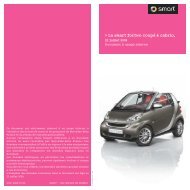Mercedes-Benz Bus History - Daimler
Mercedes-Benz Bus History - Daimler
Mercedes-Benz Bus History - Daimler
Create successful ePaper yourself
Turn your PDF publications into a flip-book with our unique Google optimized e-Paper software.
capacity buses. <strong>Daimler</strong>-<strong>Benz</strong> presented a model of one such vehicle<br />
at the 1935 Berlin auto show. The MB 805 V12 diesel previously used<br />
in locomotives was supposed to give this vehicle a particularly strong<br />
heart; a proper engine room was provided for it at the back of the bus.<br />
Under discussion were outputs of 350 and 450 hp. However, the<br />
Second World War put an abrupt end to these pipedreams.<br />
First postwar bus arrives as early as 1948<br />
After war’s end the want and need were great and no one could waste<br />
a thought on futuristic vehicles such as this. But in March 1948<br />
<strong>Daimler</strong>-<strong>Benz</strong> already managed to introduce the new O 4500 bus. This<br />
vehicle took up the traditional cab-behind-engine design, but<br />
integrated it into an aesthetically extremely pleasing overall design.<br />
As if they knew their time would soon be up and the forward-control or<br />
cab-over-engine vehicles couldn’t be stopped, the long-nosed buses of<br />
the postwar days flaunted especially elegant designs. More akin to a<br />
coquettish snub nose than a powerful hood, the conventional front<br />
end of the vehicle fitted into an overall picture which seemed to<br />
express mainly one thing: verve. The stylistic elements serving to<br />
create this impression were an arched roof, a rounded rear end, and a<br />
lateral line which lightly and elegantly rose like a treble clef from hood<br />
to window area and then seemed to bow down in an agreeable way at<br />
the rear of the bus.<br />
But design as an end in itself is something no one could have afforded<br />
in the hard times after the war, when the car played practically no role<br />
and bus and rail were responsible for mobility. In part a certain<br />
economical calculation was at the root of the novel, light design of the<br />
O 4500, because key raw materials still were rationed.<br />
<strong>Daimler</strong> Communications, 70546 Stuttgart/Germany<br />
Page 14


